Abstract
Since HLA-DRw15 (a subdivision of the HLA-DR2 specificity previously called DR2 long) is associated with dominant nonsusceptibility to insulin-dependent diabetes mellitus (IDDM), while HLA-DRw16 (another subdivision of HLA-DR2, previously called DR2 short) is positively associated with the disease, we looked for particular characteristics of HLA products encoded by the DR2 haplotypes of IDDM patients. The results show the following: (i) HLA-DQ molecules of HLA-DRw15-positive IDDM patients are different from those of HLA-DRw15-positive controls, suggesting that the HLA-DQ gene of DRw15 haplotypes is involved in a protective effect. (ii) HLA-DR and -DQ products of DRw16-positive IDDM are functionally indistinguishable from those of HLA-DRw16-positive controls. Furthermore, our data provide evidence that the residue at position 57 on the DQ beta chain could play a crucial biological role in antigen presentation to T cells as far as the DRw16 haplotype is concerned. This observation fits with the recent observation of correlation between DQ beta allelic polymorphism at position 57 and both susceptibility and resistance to IDDM.
Full text
PDF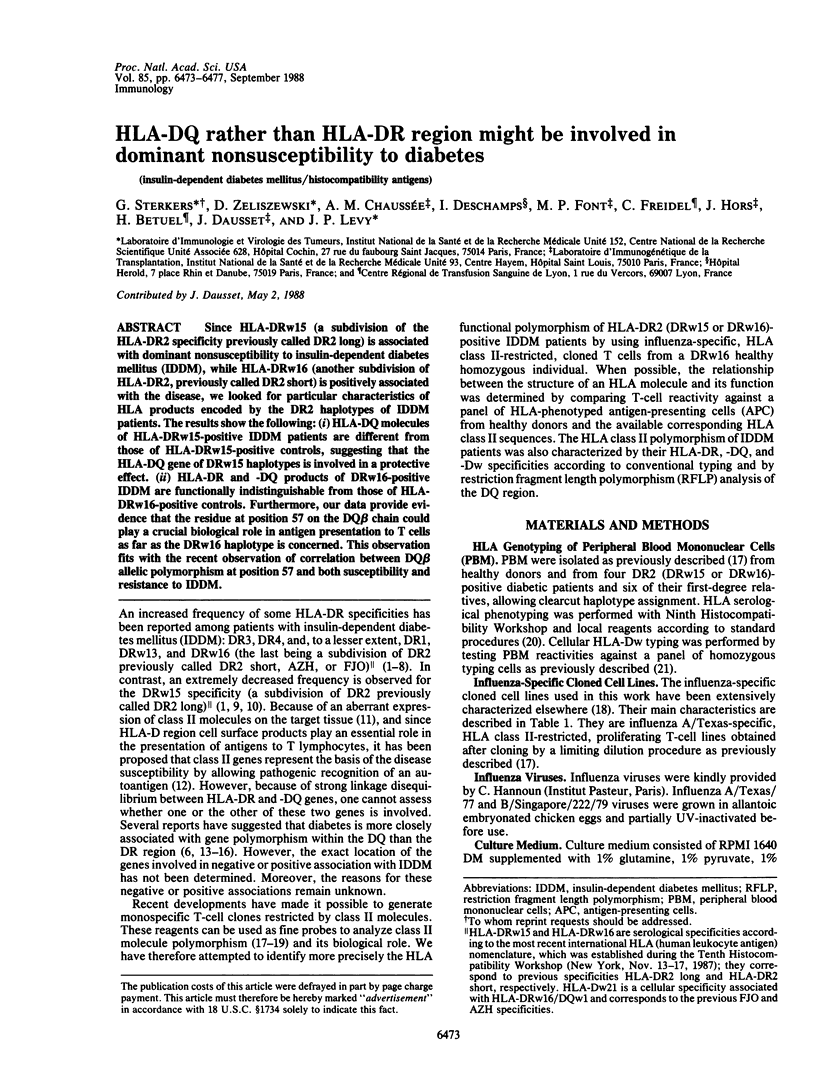
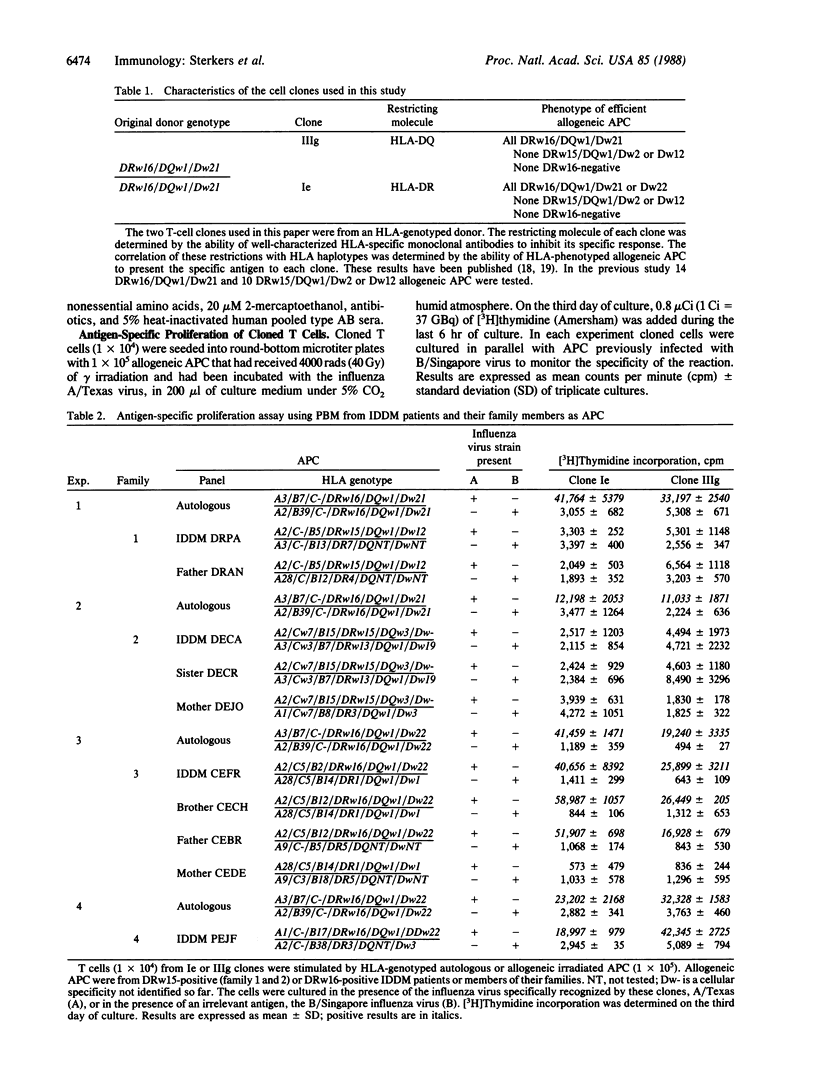
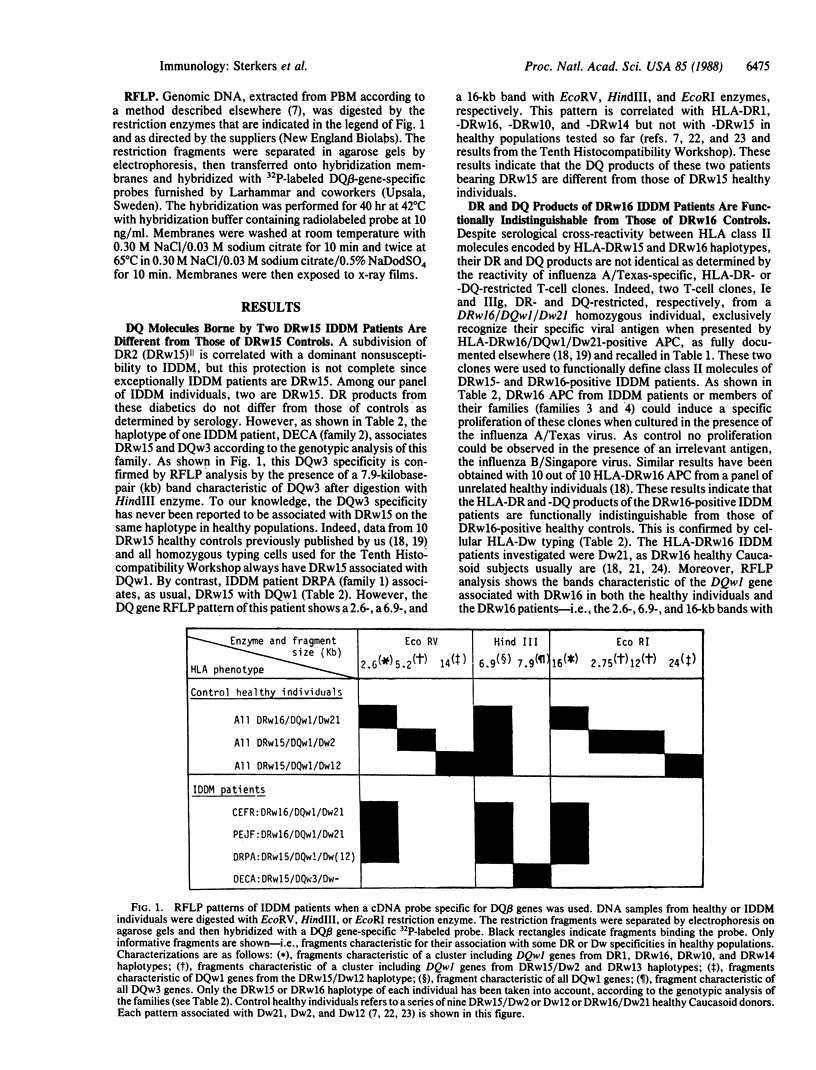
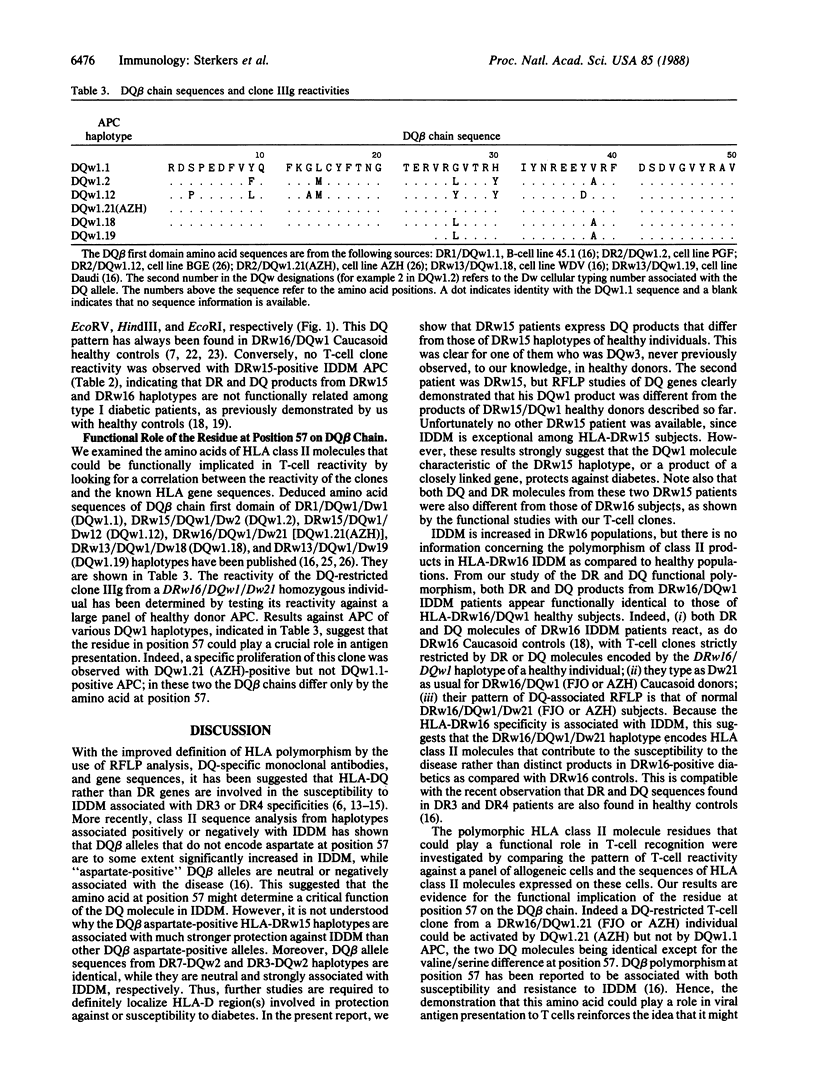
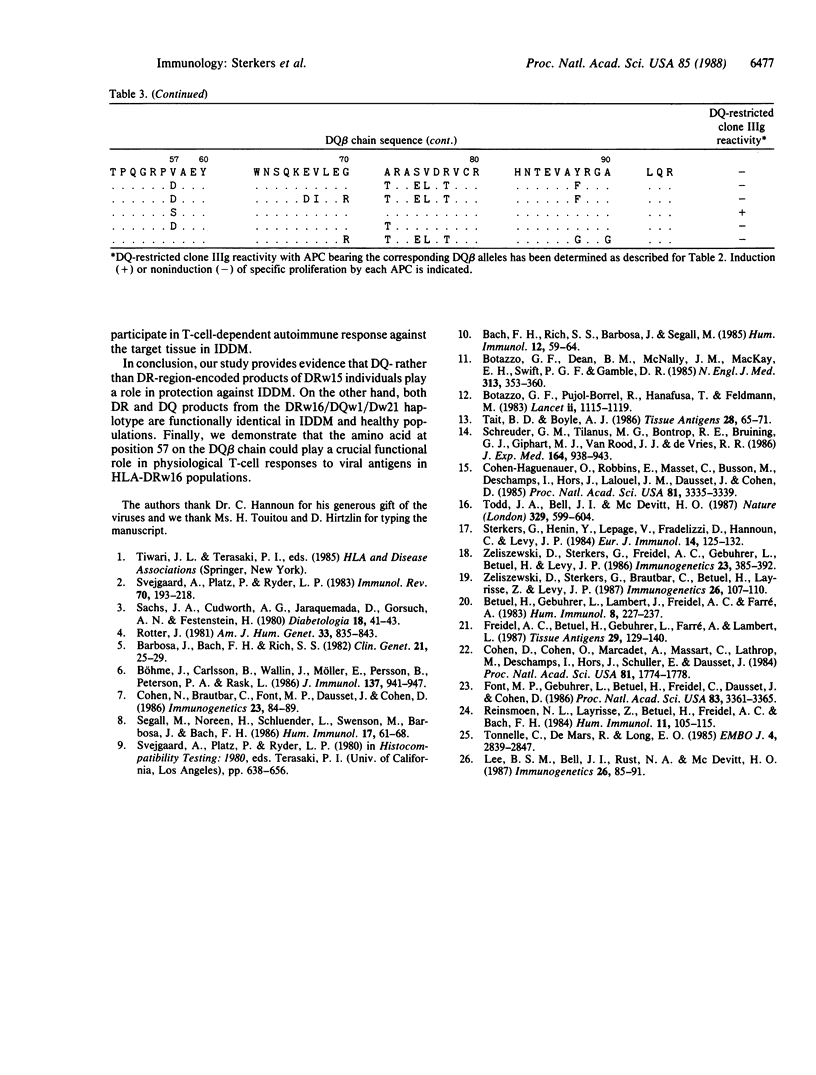
Selected References
These references are in PubMed. This may not be the complete list of references from this article.
- Bach F. H., Rich S. S., Barbosa J., Segall M. Insulin-dependent diabetes--associated HLA-D region encoded determinants. Hum Immunol. 1985 Feb;12(2):59–64. doi: 10.1016/0198-8859(85)90343-x. [DOI] [PubMed] [Google Scholar]
- Barbosa J., Bach F. H., Rich S. S. Genetic heterogeneity of diabetes and HLA. Clin Genet. 1982 Jan;21(1):25–32. doi: 10.1111/j.1399-0004.1982.tb02075.x. [DOI] [PubMed] [Google Scholar]
- Betuel H., Gebuhrer L., Lambert J., Freidel A. C., Farre A. A possible new HLA-DR allele. Hum Immunol. 1983 Nov;8(3):227–237. doi: 10.1016/0198-8859(83)90040-x. [DOI] [PubMed] [Google Scholar]
- Bottazzo G. F., Dean B. M., McNally J. M., MacKay E. H., Swift P. G., Gamble D. R. In situ characterization of autoimmune phenomena and expression of HLA molecules in the pancreas in diabetic insulitis. N Engl J Med. 1985 Aug 8;313(6):353–360. doi: 10.1056/NEJM198508083130604. [DOI] [PubMed] [Google Scholar]
- Bottazzo G. F., Pujol-Borrell R., Hanafusa T., Feldmann M. Role of aberrant HLA-DR expression and antigen presentation in induction of endocrine autoimmunity. Lancet. 1983 Nov 12;2(8359):1115–1119. doi: 10.1016/s0140-6736(83)90629-3. [DOI] [PubMed] [Google Scholar]
- Böhme J., Carlsson B., Wallin J., Möller E., Persson B., Peterson P. A., Rask L. Only one DQ-beta restriction fragment pattern of each DR specificity is associated with insulin-dependent diabetes. J Immunol. 1986 Aug 1;137(3):941–947. [PubMed] [Google Scholar]
- Cohen-Haguenauer O., Robbins E., Massart C., Busson M., Deschamps I., Hors J., Lalouel J. M., Dausset J., Cohen D. A systematic study of HLA class II-beta DNA restriction fragments in insulin-dependent diabetes mellitus. Proc Natl Acad Sci U S A. 1985 May;82(10):3335–3339. doi: 10.1073/pnas.82.10.3335. [DOI] [PMC free article] [PubMed] [Google Scholar]
- Cohen D., Cohen O., Marcadet A., Massart C., Lathrop M., Deschamps I., Hors J., Schuller E., Dausset J. Class II HLA-DC beta-chain DNA restriction fragments differentiate among HLA-DR2 individuals in insulin-dependent diabetes and multiple sclerosis. Proc Natl Acad Sci U S A. 1984 Mar;81(6):1774–1778. doi: 10.1073/pnas.81.6.1774. [DOI] [PMC free article] [PubMed] [Google Scholar]
- Cohen N., Brautbar C., Font M. P., Dausset J., Cohen D. HLA-DR2-associated Dw subtypes correlate with RFLP clusters: most DR2 IDDM patients belong to one of these clusters. Immunogenetics. 1986;23(2):84–89. doi: 10.1007/BF00377966. [DOI] [PubMed] [Google Scholar]
- Font M. P., Gebuhrer L., Betuel H., Freidel C., Dausset J., Cohen D. HLA-DR2, -DR5, and DRw6 associated Dw subtypes correlate with HLA-DR beta and -DQ beta restriction fragment length polymorphisms. Proc Natl Acad Sci U S A. 1986 May;83(10):3361–3365. doi: 10.1073/pnas.83.10.3361. [DOI] [PMC free article] [PubMed] [Google Scholar]
- Freidel A. C., Betuel H., Gebuhrer L., Farre A., Lambert J. Cellular and serological subtypes of HLA-DR2. Tissue Antigens. 1987 Mar;29(3):129–140. doi: 10.1111/j.1399-0039.1987.tb01565.x. [DOI] [PubMed] [Google Scholar]
- Lee B. S., Bell J. I., Rust N. A., McDevitt H. O. Structural and functional variability among DQ beta alleles of DR2 subtypes. Immunogenetics. 1987;26(1-2):85–91. doi: 10.1007/BF00345459. [DOI] [PubMed] [Google Scholar]
- Reinsmoen N. L., Layrisse Z., Betuel H., Freidel A. C., Bach F. H. A study of HLA-DR2 associated HLA-Dw/LD specificities. Hum Immunol. 1984 Oct;11(2):105–115. doi: 10.1016/0198-8859(84)90049-1. [DOI] [PubMed] [Google Scholar]
- Rotter J. I. The modes of inheritance of insulin-dependent diabetes mellitus or the genetics of IDDM, no longer a nightmare but still a headache. Am J Hum Genet. 1981 Nov;33(6):835–851. [PMC free article] [PubMed] [Google Scholar]
- Sachs J. A., Cudworth A. G., Jaraquemada D., Gorsuch A. N., Festenstein H. Type 1 diabetes and the HLA-D locus. Diabetologia. 1980 Jan;18(1):41–43. doi: 10.1007/BF01228300. [DOI] [PubMed] [Google Scholar]
- Schreuder G. M., Tilanus M. G., Bontrop R. E., Bruining G. J., Giphart M. J., van Rood J. J., de Vries R. R. HLA-DO polymorphism associated with resistance to type I diabetes detected with monoclonal antibodies, isoelectric point differences, and restriction fragment length polymorphism. J Exp Med. 1986 Sep 1;164(3):938–943. doi: 10.1084/jem.164.3.938. [DOI] [PMC free article] [PubMed] [Google Scholar]
- Segall M., Noreen H., Schluender L., Swenson M., Barbosa J., Bach F. H. DR2+ haplotypes in insulin-dependent diabetes: analysis of DNA restriction fragment length polymorphisms. Hum Immunol. 1986 Sep;17(1):61–68. doi: 10.1016/0198-8859(86)90075-3. [DOI] [PubMed] [Google Scholar]
- Sterkers G., Henin Y., Lepage V., Fradelizzi D., Hannoun C., Levy J. P. Influenza A hemagglutinin-specific T cell clones strictly restricted by HLA-DR1 or HLA-DR7 molecules. Eur J Immunol. 1984 Feb;14(2):125–132. doi: 10.1002/eji.1830140205. [DOI] [PubMed] [Google Scholar]
- Svejgaard A., Platz P., Ryder L. P. HLA and disease 1982--a survey. Immunol Rev. 1983;70:193–218. doi: 10.1111/j.1600-065x.1983.tb00715.x. [DOI] [PubMed] [Google Scholar]
- Tait B. D., Boyle A. J. DR4 and susceptibility to type I diabetes mellitus: discrimination of high risk and low risk DR4 haplotypes on the basis of TA10 typing. Tissue Antigens. 1986 Aug;28(2):65–71. doi: 10.1111/j.1399-0039.1986.tb00463.x. [DOI] [PubMed] [Google Scholar]
- Todd J. A., Bell J. I., McDevitt H. O. HLA-DQ beta gene contributes to susceptibility and resistance to insulin-dependent diabetes mellitus. Nature. 1987 Oct 15;329(6140):599–604. doi: 10.1038/329599a0. [DOI] [PubMed] [Google Scholar]
- Tonnelle C., DeMars R., Long E. O. DO beta: a new beta chain gene in HLA-D with a distinct regulation of expression. EMBO J. 1985 Nov;4(11):2839–2847. doi: 10.1002/j.1460-2075.1985.tb04012.x. [DOI] [PMC free article] [PubMed] [Google Scholar]
- Zeliszewski D., Sterkers G., Brautbar C., Betuel H., Layrisse Z., Levy J. P. Functional relationships between HLA-DR2-short/FJO, DB9, and AZH as defined by DR- and DQ-restricted influenza-specific cloned T cells. Immunogenetics. 1987;26(1-2):107–110. doi: 10.1007/BF00345463. [DOI] [PubMed] [Google Scholar]
- Zeliszewski D., Sterkers G., Freidel C., Gebuhrer L., Betuel H., Levy J. P. Functional definition of HLA-DR and -DQ epitopes specific for DR2-short, DwFJO haplotype. Immunogenetics. 1986;23(6):385–392. doi: 10.1007/BF00372671. [DOI] [PubMed] [Google Scholar]


